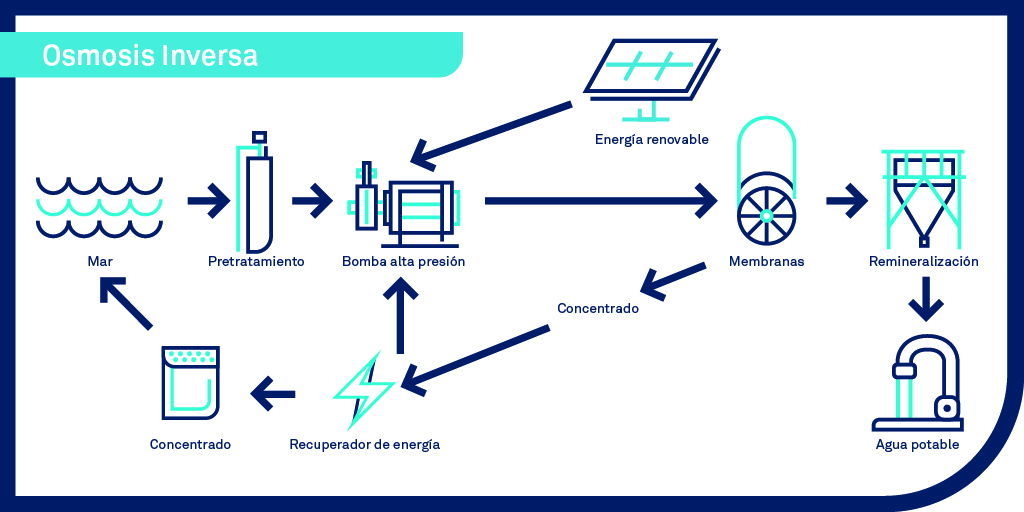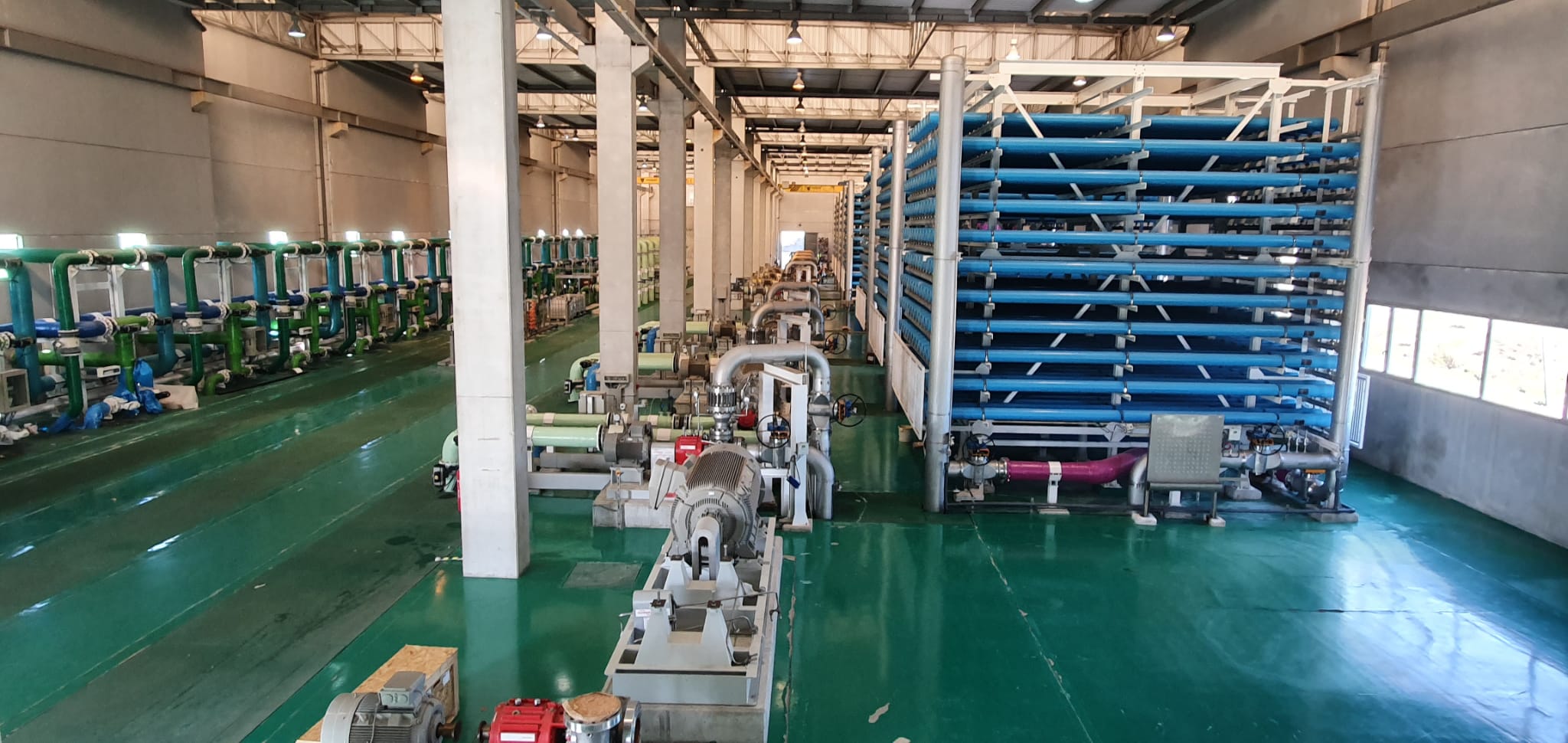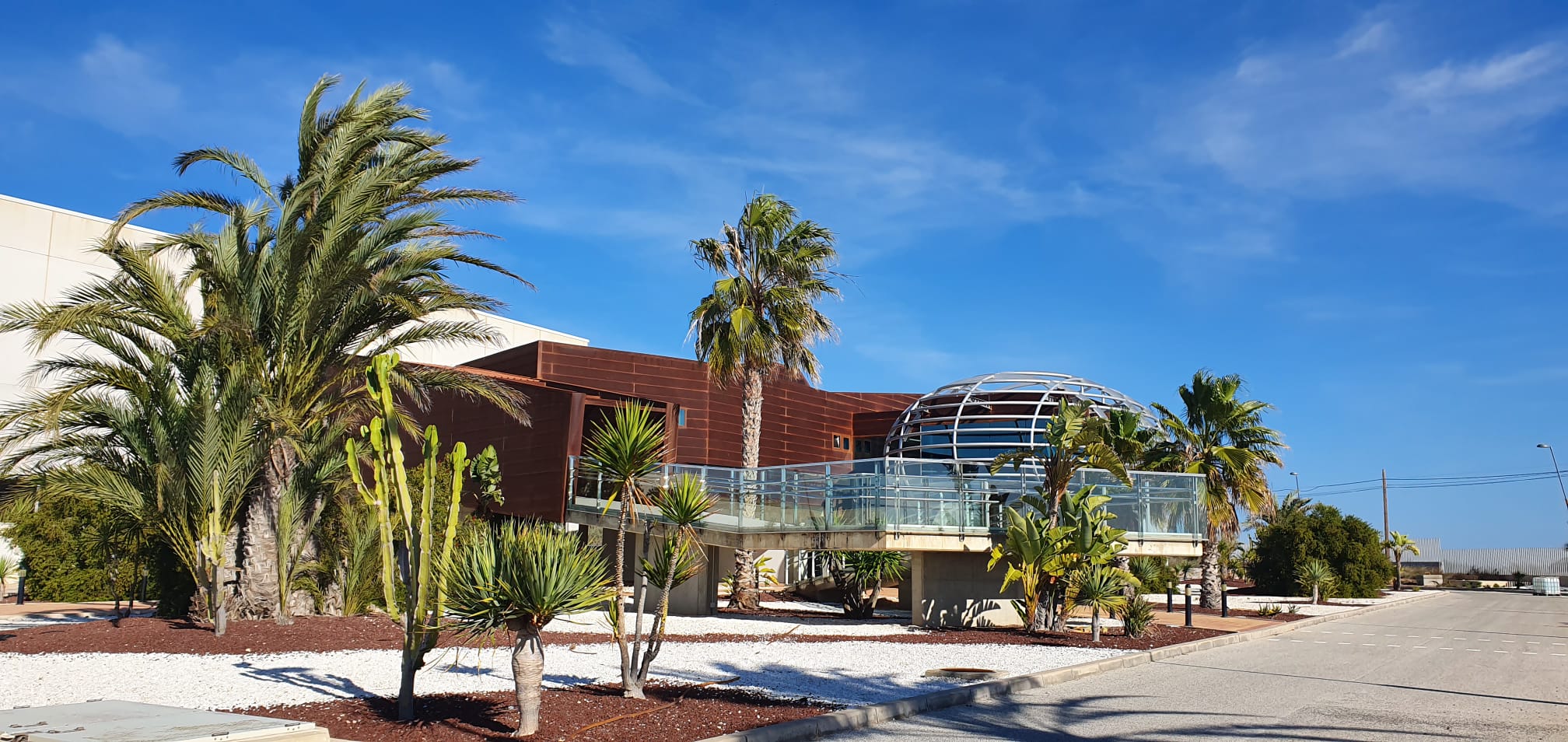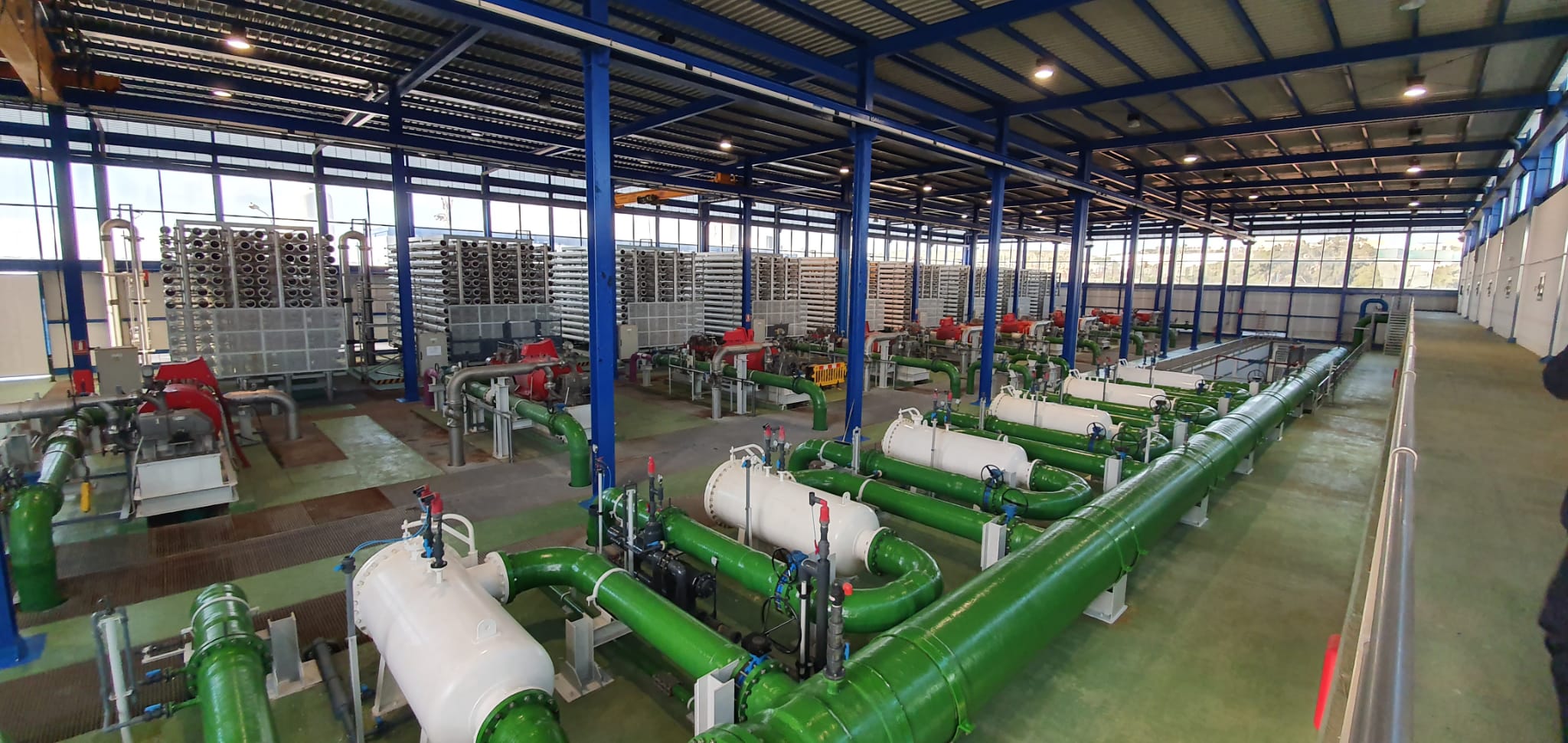The protection, conservation, and restoration of natural resources are all part of our 2021-2025 Sustainable Sacyr action plan, with two fundamental targets: reduce the water footprint and improve management of water resources.
As such, we are immersed in a process of transforming our desalination technology. Specifically, we are focused on reverse osmosis in an attempt to achieve more sustainable membranes.

What is reverse osmosis?
Reverse osmosis is the process used at our desalination plants to purify brackish water and seawater, extracting salts and other pollutants. Osmosis is a naturally occurring phenomenon, exchanging salts and water in cell membranes or plant roots, for example. At industrial facilities, we reverse the process (reverse osmosis) by applying high pressure to the membranes, allowing water to pass but not salts or other pollutants. Though these membranes have an average life of 5-8 years and can be partially restored through cleaning, at the end of their useful lives they become waste, which is difficult and expensive to manage.
After the success of the LIFE Transfomem project carried out in recent years, Sacyr is now expanding the application of these technologies in an attempt to transform discarded reverse osmosis membranes into nanofiltration (NF), microfiltration (MF) and ultrafiltration (UF) membranes, developing several pilot programs to optimize the technology.
Here to discuss the project are its lead researchers Elena Campos, Patricia Terrero and Mercedes Calzada, from the Innovation department of Sacyr Water.

“On the one hand, we are looking for a sustainable alternative to the manufacture and use of water treatment membranes. On the other, we want to promote ultrafiltration as a pre-treatment because it is highly effective in removing suspended solids and reducing SDI (Silt Density Index, a measure of the fouling capacity of water), bacteria, viruses, and other pathogens in feedwater to produce water of the highest purity,” explains Patricia Terrero.
In recent years, UF has been used to pre-treat seawater prior to the membrane process, although its main drawbacks include the technology’s high investment and operating costs.
Optimizing energy and reducing the carbon footprint
“The technology allows the company to make the necessary amount available for human consumption, with the right quality for each use, without generating waste or pollutants. Its solutions target the development needs and opportunities of the 2030 Agenda, contributing to the achievement of SDG 6 “Clean Water and Sanitation” and SDG 14 “Life Below Water,” Elena Campos says.
“Sacyr Water continues working to optimize energy and reduce the carbon footprint of desalination. It has presented several Next Generation EU funding proposals in the fields of renewable energy, circular economy, and island sustainability, and joined other industry initiatives, like the AEDyR (Spanish Desalination and Reuse Association) proposal.”
The use of recycled membranes would reduce investment costs, increase sustainability, and promote the circular economy.
What are the benefits of this process?
¬ Material: membrane recycling reduces the raw materials used in the manufacture of NF or UF membranes by 100%.
¬ Emissions: the carbon footprint of the transformation module is 95-99% lower than its commercial counterparts.
¬ Waste: thanks to this technology, it is possible to recycle 70% of discarded membranes.
¬ Water: direct and indirect water consumption could be reduced by more than 90%.
Our desalination facilities, which are equipped with the latest technology, are able to incorporate more than 2 million m3 into the water cycle each day (equal to the consumption of a city of 10 million people), reducing energy consumption and substantially enhancing the existing natural resources.

Sustainability above all else
“We aim to make our desalination projects as environmentally sustainable as possible by using renewable energy for their power supply (like at the Aguilas and Perth plants in Australia), protecting the marine environment through rigorous monitoring studies, embracing new technologies (underwater drones and digital twins), and being inspired by innovation. It is also worth noting a recent project that uses desalinated water for agriculture, LIFE Deseacrop , one of the largest users of desalinated water in Spain,” Mercedes Calzada points out.
These new processes will allow us to contribute through the technological development of the membrane transformation and re-use project, by increasing the sustainability of water treatment systems, improving the durability of membranes, and reducing the environmental costs associated with this technology.
